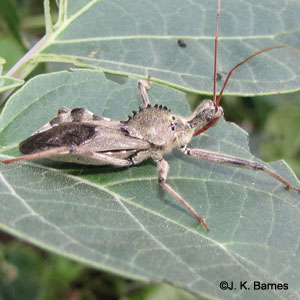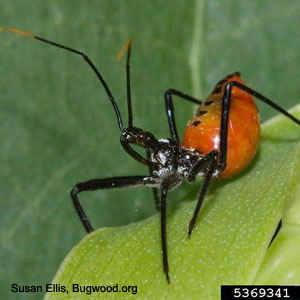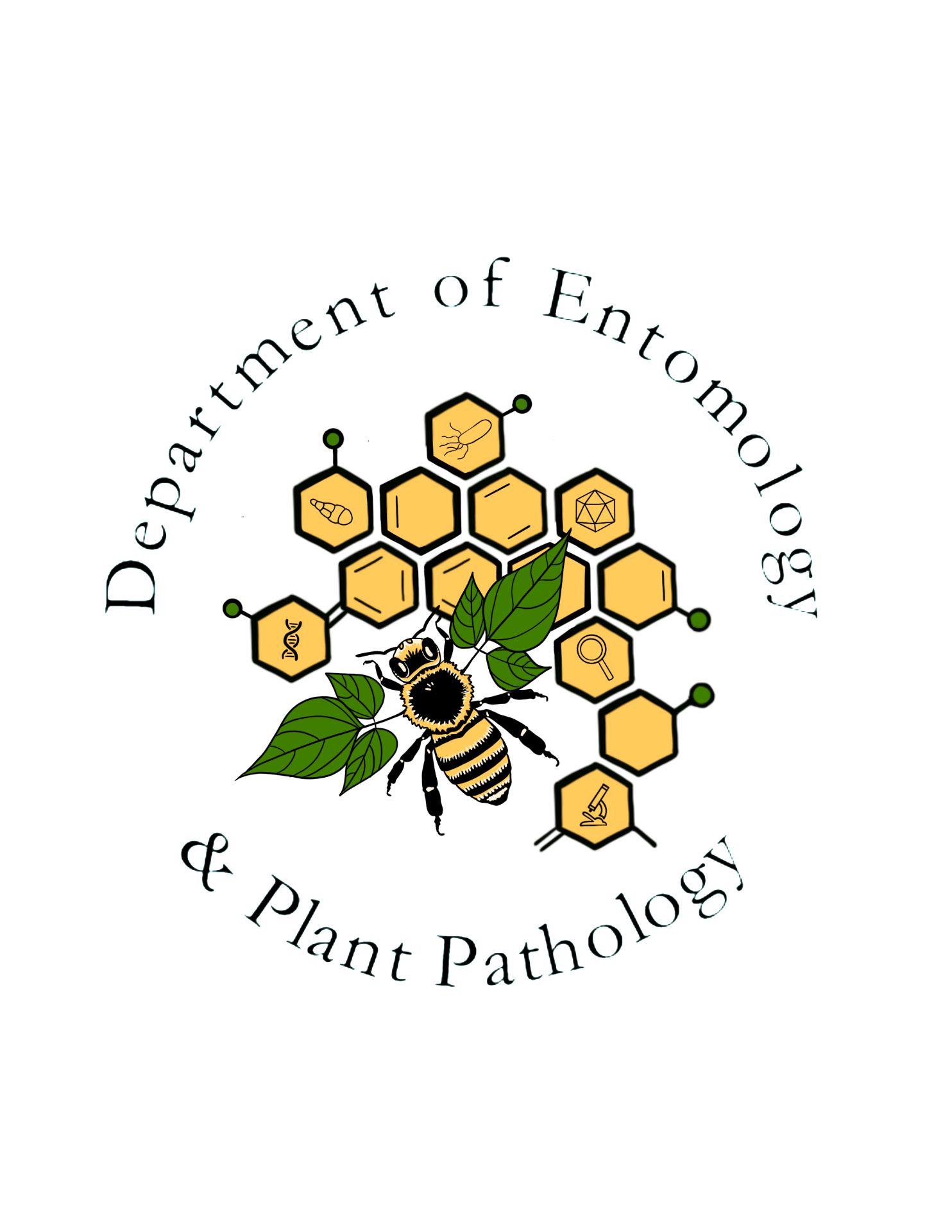Wheel bug
Order: Hemiptera
Family: Reduviidae
Genus and species: Arilus cristatus (Linnaeus)


Wheel bugs are among the largest terrestrial true bugs in the United States, with adults measuring 1.0 to 1.25 inches long. They have a characteristic dorsal crest on the thorax that resembles a cogwheel or gear. They are generalist predators, feeding on many kinds of insects, including such garden pests as caterpillars, stink bugs, and Japanese beetles. Because of their predatory habits, they are considered beneficial insects in the garden.They are common in North America, having been reported from Rhode Island south to Florida and west to Texas and California. They also occur in Mexico and Guatemala. Many people never see them because they are shy and slow moving, hiding among vegetation. Their flight is clumsy and produces a noisy buzzing sound, somewhat like that of a flying grasshopper. They also produce chirping sounds by rubbing the tip of the beak across a series of ridges on the underside of the thorax. Like other assassin bugs, wheel bugs plunge their beaks into their prey and inject enzymes that dissolve the prey tissue to the consistency of broth, which the bugs can then suck up. Wheel bugs are not shy about biting human beings who mishandle them, and these bites can be very painful and take months to heal. Adults mate in the autumn, and females lay eggs on twigs. The eggs pass the winter and hatch in the spring. There is one generation per year. Nymphs do not closely resemble adults. They lack the thoracic crest, and the abdomen tends to be red or orange, contrasting with the black head, thorax, and appendages.
